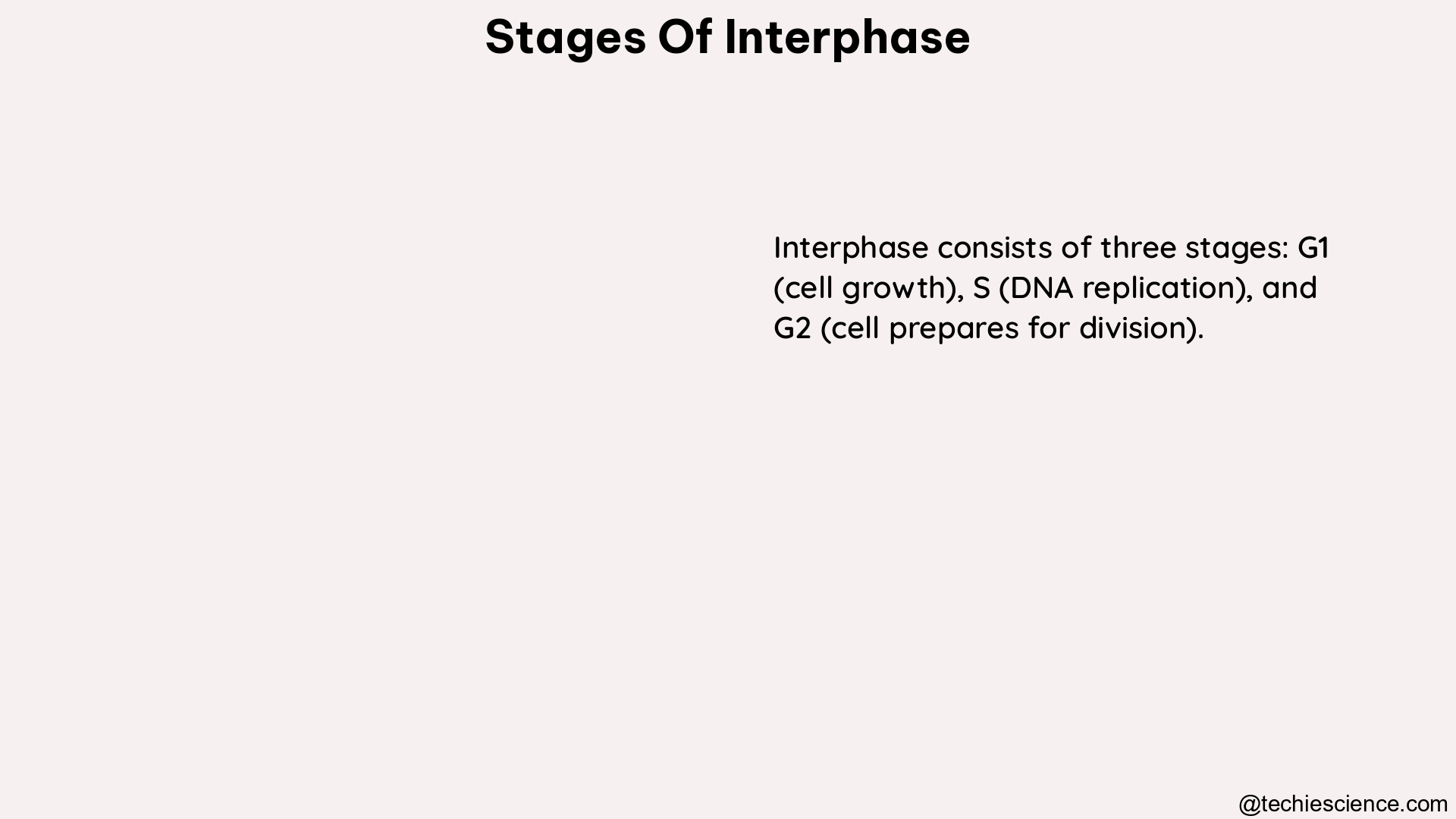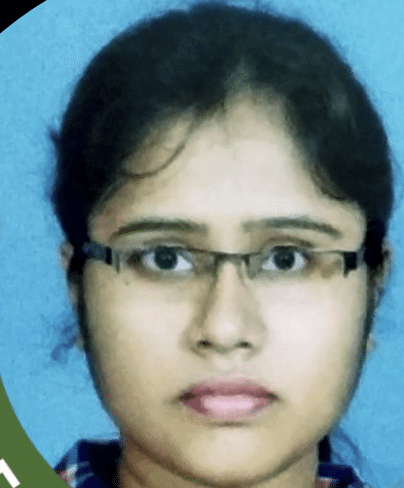Interphase is the longest and most crucial stage of the cell cycle, where the cell prepares for division by replicating its genetic material and ensuring the proper distribution of organelles and cellular components. This comprehensive guide will delve into the intricate details of the three distinct stages of interphase: G1, S, and G2.
G1 Phase: The Growth and Preparation Stage
The G1 phase, also known as the “first gap” phase, is the initial stage of interphase. During this phase, the cell grows in size and prepares for DNA replication. Key events and characteristics of the G1 phase include:
-
Cell Growth: Cells in the G1 phase actively synthesize proteins, organelles, and other cellular components to increase their overall size and mass. This growth is essential for the cell to have the necessary resources and machinery to undergo successful cell division.
-
DNA Repair: The cell closely monitors the integrity of its DNA during G1. If any DNA damage is detected, the cell will pause its progression through the cell cycle to allow for DNA repair mechanisms to address the issues before proceeding to the next stage.
-
Checkpoint Regulation: The G1 phase is tightly regulated by a series of checkpoints that ensure the cell is ready to enter the S phase. These checkpoints, controlled by cyclin-dependent kinases (CDKs) and their regulatory subunits (cyclins), monitor factors such as cell size, nutrient availability, and growth factor signals to determine if the cell can proceed to the next stage.
-
Duration Variability: The duration of the G1 phase can vary significantly depending on the cell type and environmental conditions. Rapidly dividing cells, such as those found in embryonic tissues, have a relatively short G1 phase, while quiescent or differentiated cells may have an extended G1 phase or even enter a non-dividing state known as G0.
S Phase: The DNA Replication Stage

The S phase, or “synthesis” phase, is the stage during which the cell’s genetic material is replicated. This process ensures that each daughter cell receives a complete set of chromosomes during cell division. Key events and characteristics of the S phase include:
-
DNA Replication: During the S phase, the cell’s DNA is duplicated through a highly coordinated process involving numerous enzymes and regulatory proteins. This process ensures that each chromosome is replicated with high fidelity, maintaining the genetic integrity of the cell.
-
Chromatin Remodeling: As the DNA is replicated, the chromatin structure undergoes dynamic changes to facilitate the replication process. Histone modifications and chromatin-remodeling complexes play a crucial role in regulating DNA accessibility and the progression of the replication fork.
-
Centrosome Duplication: In preparation for cell division, the cell’s centrosomes, which serve as the microtubule-organizing centers, are also duplicated during the S phase. This ensures that each daughter cell receives a complete set of centrosomes, which are essential for the proper formation of the mitotic spindle during cell division.
-
Duration and Regulation: The duration of the S phase can vary depending on the cell type and the complexity of the genome being replicated. Regulatory mechanisms, such as the activation of specific CDK-cyclin complexes and the availability of replication factors, ensure the timely and accurate completion of DNA replication.
G2 Phase: The Growth and Preparation for Division
The G2 phase, or “second gap” phase, is the final stage of interphase, where the cell prepares for the upcoming mitotic division. Key events and characteristics of the G2 phase include:
-
Cell Growth and Organelle Duplication: During the G2 phase, the cell continues to grow in size and synthesize additional organelles, such as mitochondria and the Golgi apparatus, to ensure that each daughter cell receives the necessary cellular components for proper function.
-
DNA Damage Checkpoint: The G2 phase includes a critical checkpoint that monitors the integrity of the replicated DNA. If any DNA damage is detected, the cell will pause its progression through the cell cycle to allow for DNA repair mechanisms to address the issues before proceeding to mitosis.
-
Microtubule Organization: In preparation for cell division, the cell’s microtubule network undergoes reorganization and the centrosomes migrate to opposite poles of the cell, forming the foundation for the mitotic spindle.
-
Cyclin-Dependent Kinase Regulation: The progression through the G2 phase is tightly regulated by the activity of specific CDK-cyclin complexes, which ensure that the cell is ready to enter the mitotic phase and undergo successful cell division.
-
Duration and Variability: The duration of the G2 phase can vary depending on the cell type and the specific requirements for cell division. Rapidly dividing cells may have a shorter G2 phase, while cells undergoing differentiation or specialized functions may have an extended G2 phase.
By understanding the intricate details of the three stages of interphase, researchers and students can gain valuable insights into the complex regulatory mechanisms that govern cell cycle progression and the maintenance of cellular homeostasis.
Reference:
- Cell Cycle Stage Classification Using Phase Imaging with Computational Spectroscopy (PICS) and Machine Learning. NCBI. https://www.ncbi.nlm.nih.gov/pmc/articles/PMC9026251/
- Quantification of cell cycle kinetics by flow cytometry. Nature Protocols. https://www.nature.com/articles/nprot.2016.157
- A computational model of the mammalian cell cycle. Science. https://science.sciencemag.org/content/339/6115/237
- Interphase – an overview | ScienceDirect Topics. https://www.sciencedirect.com/topics/immunology-and-microbiology/interphase
- Cell Division: Mitosis and Meiosis – Edvotek.com. https://www.edvotek.com/site/pdf/AP07.pdf
- CellDivisionLab.docx – Name: Section: Lab Activity 2: Table 1. https://www.coursehero.com/file/88293060/CellDivisionLabdocx/

I am Trisha Dey, a postgraduate in Bioinformatics. I pursued my graduate degree in Biochemistry. I love reading .I also have a passion for learning new languages.
Let’s connect through linked in: